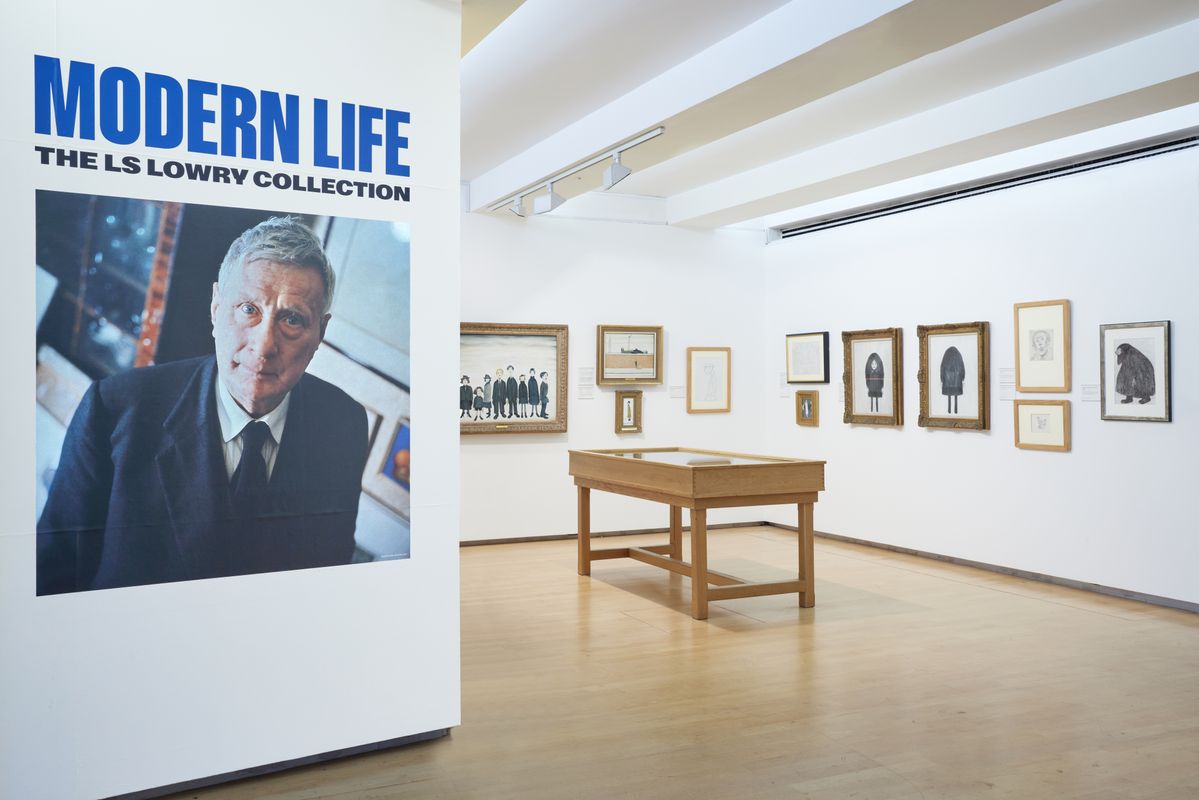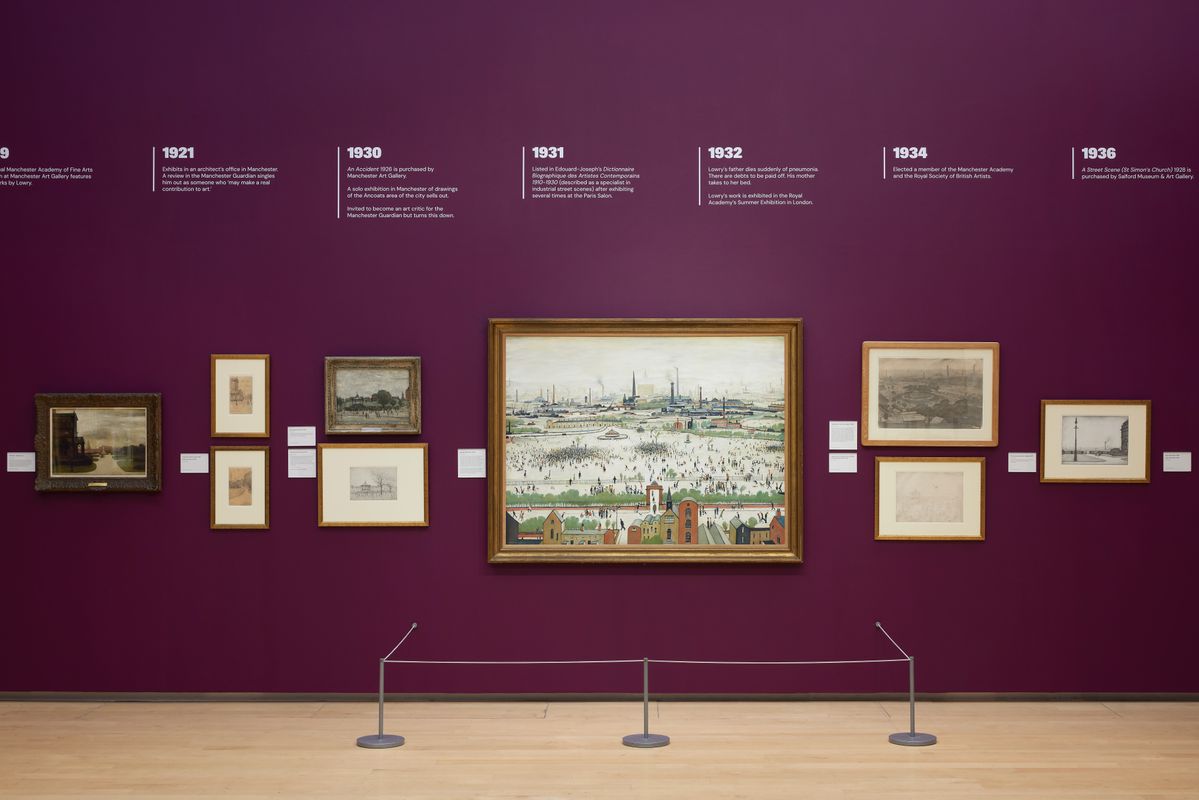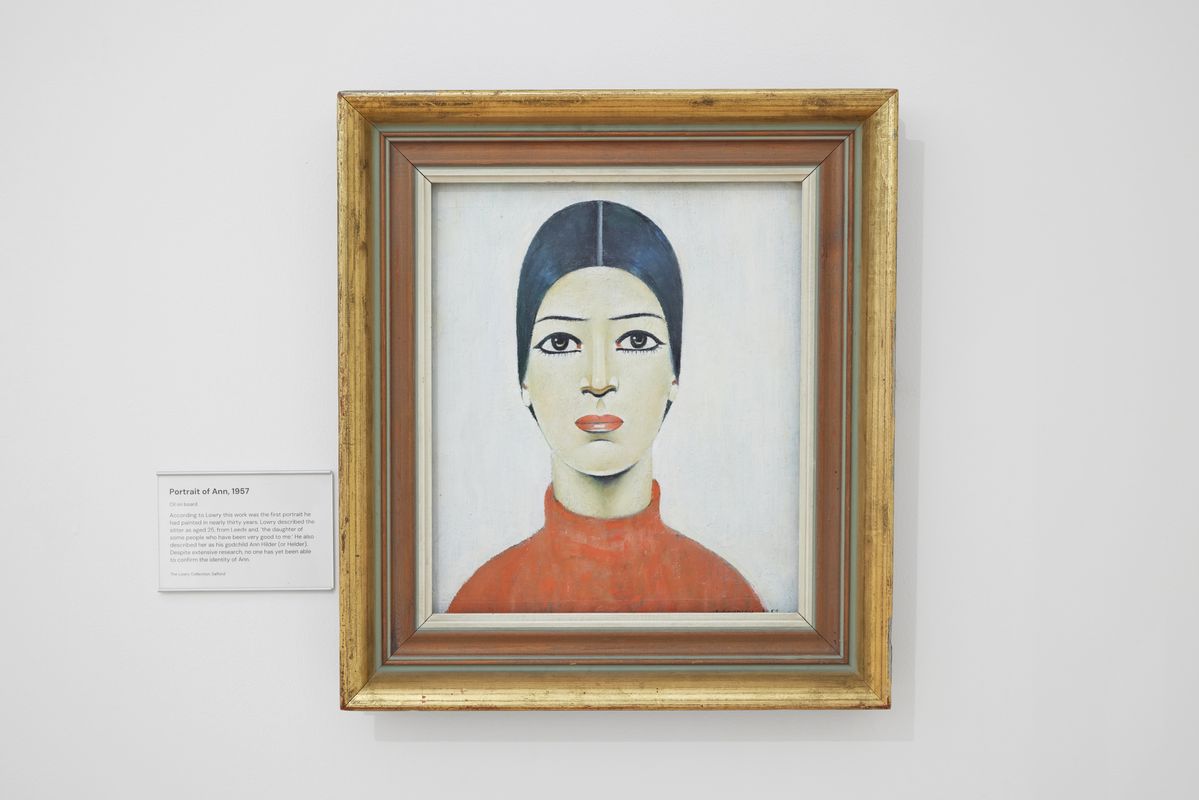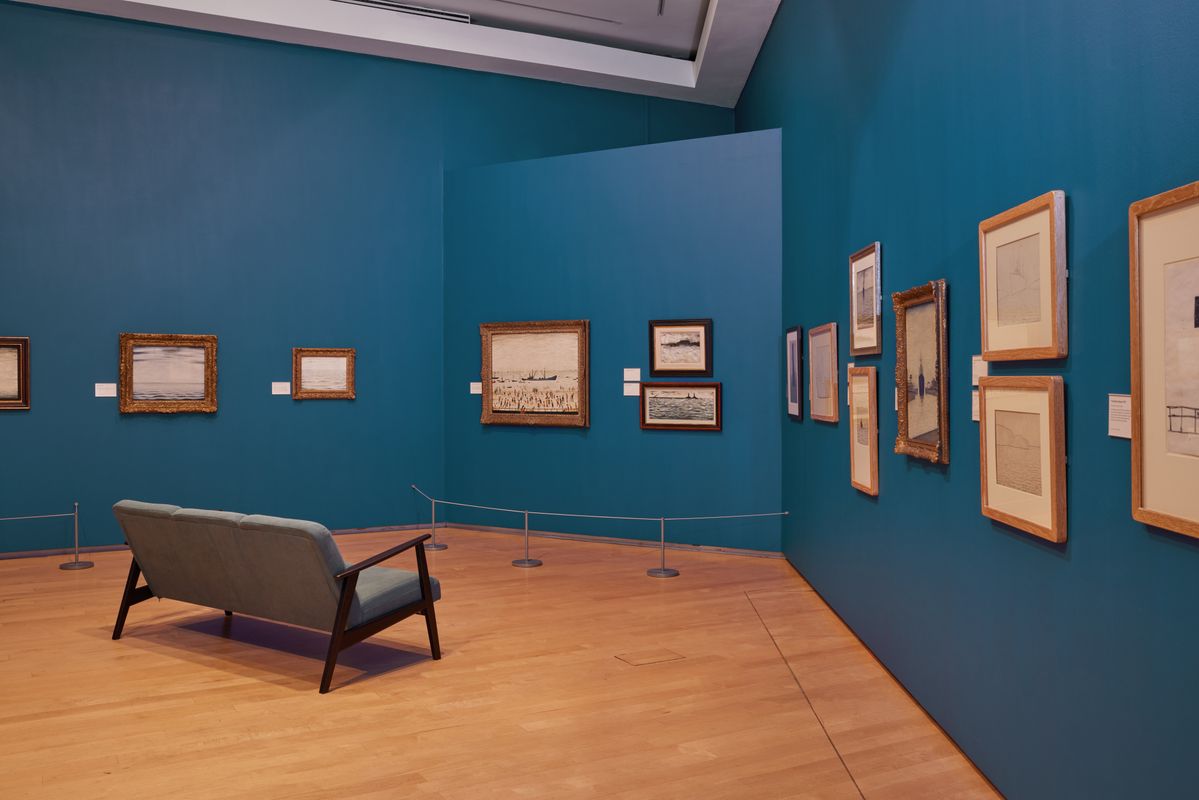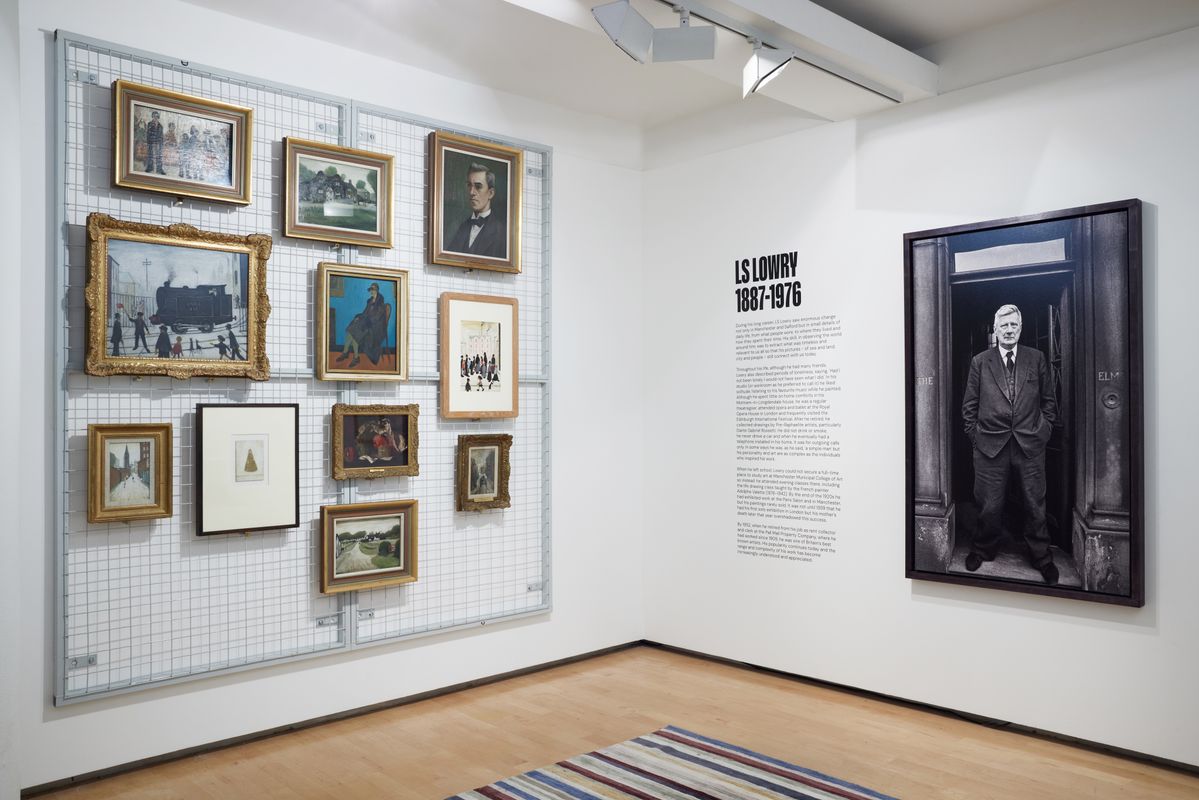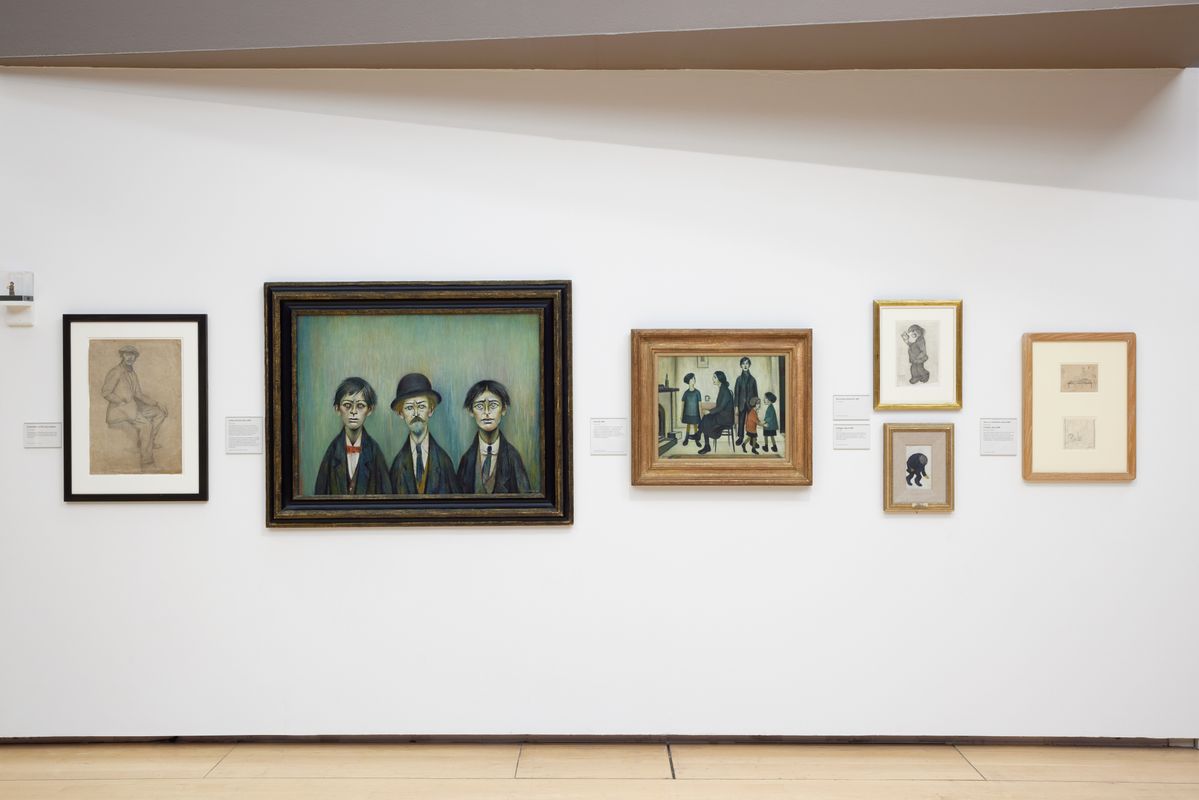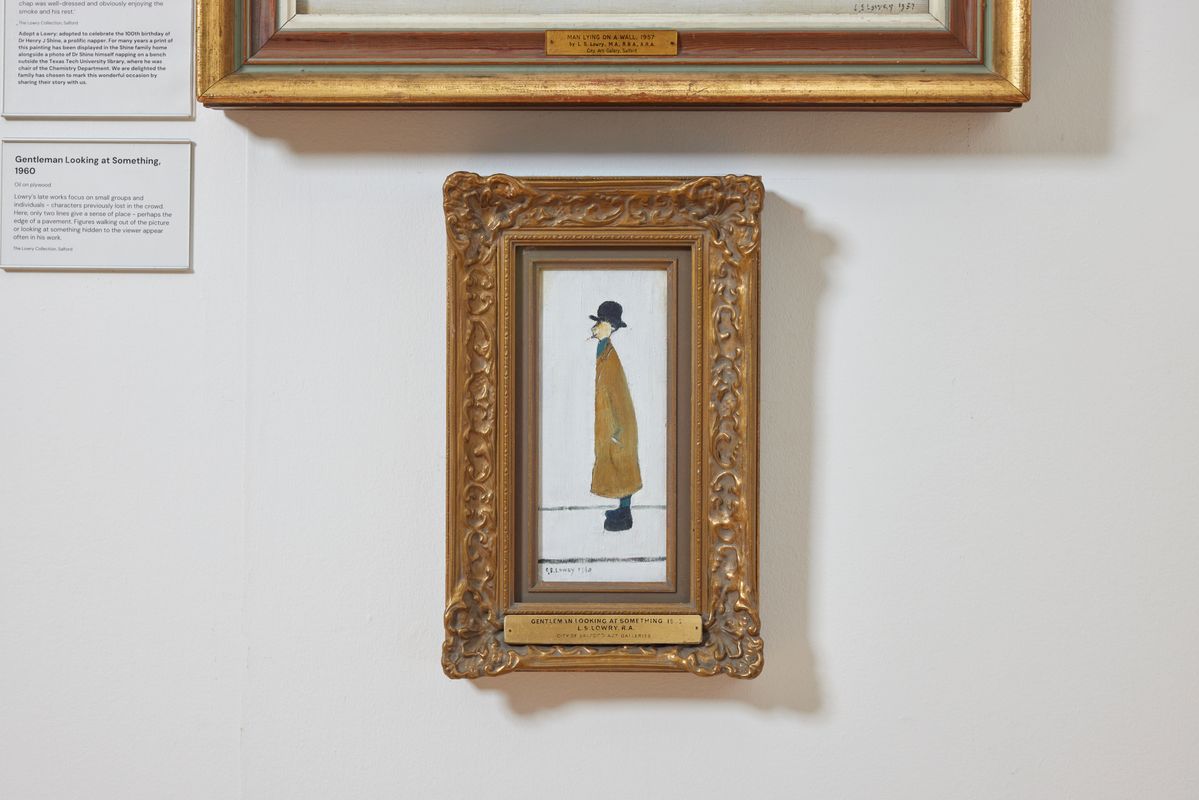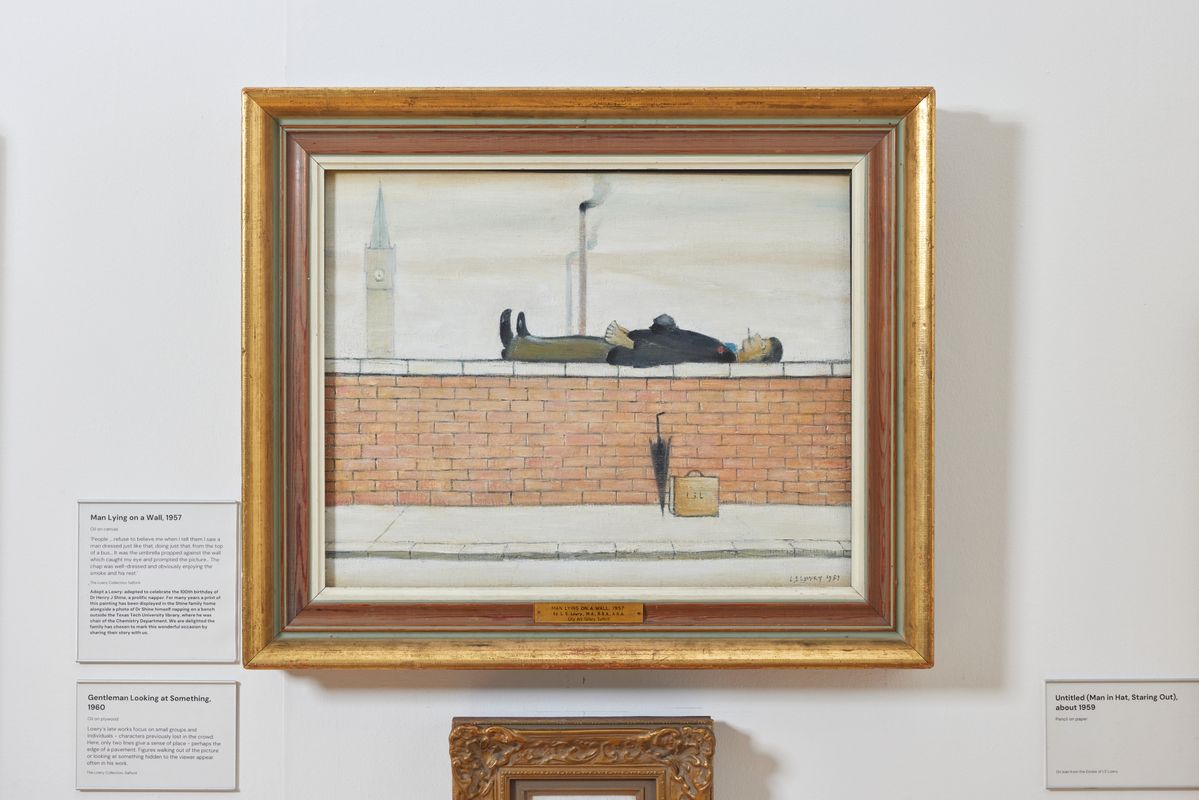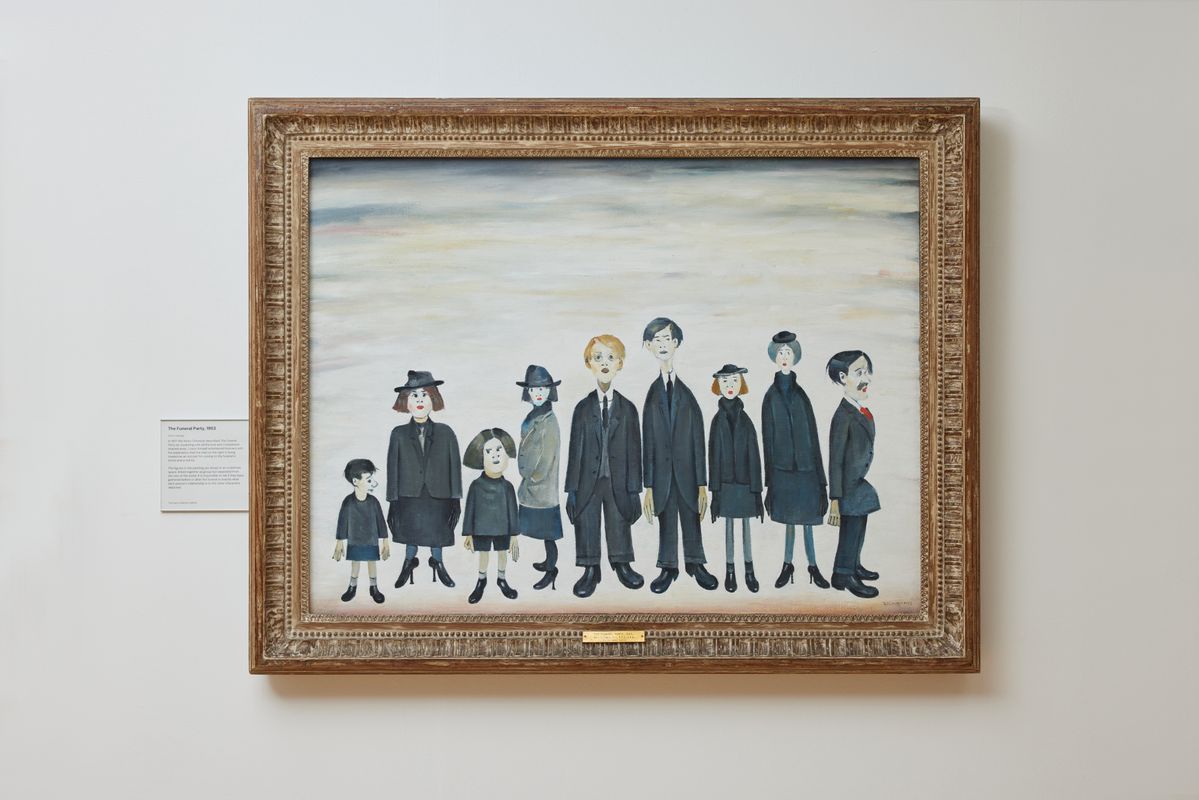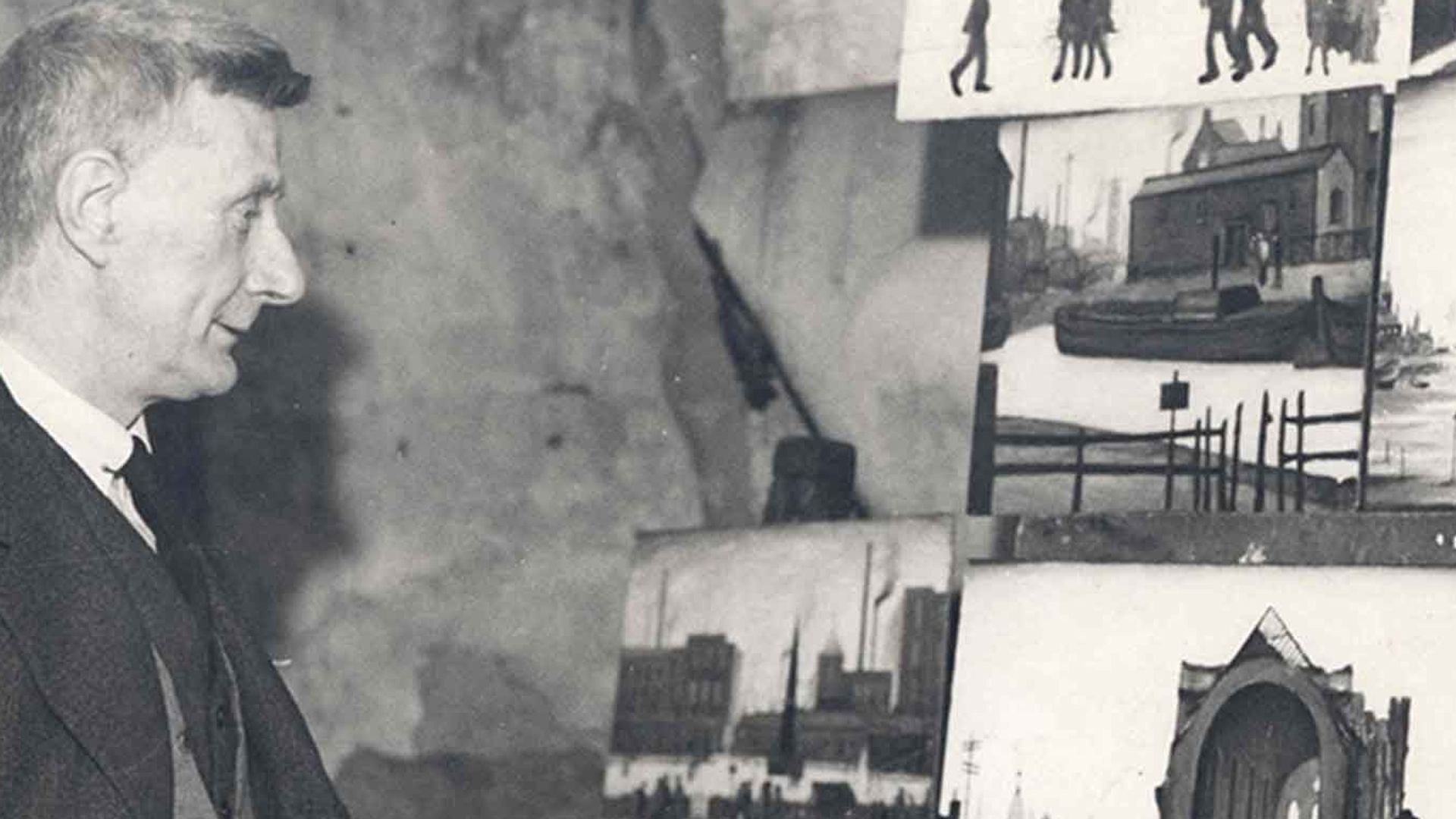
About LS Lowry
“You don’t need brains to be a painter, just feelings.” LS Lowry
Although best known for his mill scenes and industrial landscapes, Lowry’s work covers a wide range of themes and subjects, from landscapes and seascapes to portraits and surreal imaginings.
He studied painting and drawing in the evenings at the Municipal College of Art (1905–15), and at Salford School of Art (1915–25), while working as a rent collector during the day.
His initial drawings were made outdoors, on the spot, often rough sketches on the back of an envelope or whatever scrap of paper was to hand.
More finished drawings were made later and, after about 1910, he only ever painted at home in what he referred to as his workroom, rather than his studio. His palette was very restricted and he used only five colours – flake white, ivory black, vermilion (red), Prussian blue and yellow ochre.
After years of painting and exhibiting in and around Manchester and Salford, Lowry received his first one-man exhibition in London in 1939 and went on to national fame. He died aged 88 in 1976 just months before a retrospective exhibition opened at the Royal Academy.
Early Life
Laurence Stephen Lowry was born 1 November 1887 in Barrett Street, Stretford. His father, Robert, worked as a clerk in an estate agent’s office. His mother, Elizabeth, was a talented pianist. By 1898 the family were living in Victoria Park, a leafy suburb in south Manchester, but in 1909 financial difficulties necessitated a move to Pendlebury, an industrial area between Manchester and Bolton.
After leaving school Lowry took a job as a clerk with a Manchester firm of chartered accountants, Thomas Aldred and Son. In 1910, after being made redundant from a second job, he became rent collector and clerk for the Pall Mall Property Company and stayed there until his retirement in 1952.
As a child he had enjoyed drawing, and he used part of his income to pay for private painting lessons with the artists William Fitz and Reginald Barber. In 1905 he began attending evening classes at Manchester Municipal College of Art. His tutor in the life drawing class there was the Frenchman Adolphe Valette, who brought first-hand knowledge of the Impressionists, such as Claude Monet and Camille Pissarro to his classes. ‘I cannot over-estimate the effect on me at that time of the coming into this drab city of Adolphe Valette… He had a freshness and a breadth of experience that exhilarated his students.’
By 1915 Lowry had begun attending evening classes at Salford School of Art, based in the Royal Technical College on the edges of Peel Park. One of his tutors there, Bernard Taylor (art critic for the Manchester Guardian) advised Lowry that his paintings were too dark. In response, Lowry tried painting on a pure white background, a technique he was to retain for the rest of his career.
1916 - 1929
Peel Park, and the views across it from the Technical College windows, appear regularly in Lowry’s work. He had begun to see the possibilities of painting what he saw on his doorstep, rather than more conventional landscapes based on the countryside nearby. The best known story Lowry told of how he became interested in the industrial scene described how, after missing a train at Pendlebury station, he saw the Acme Spinning Company’s mill turning out, ‘I watched this scene – which I’d looked at many times without seeing – with rapture.’
In 1921 Lowry exhibited work alongside two other artists in an architect’s offices in Manchester. The exhibition was reviewed in the Manchester Guardian by Bernard Taylor who described Lowry as someone who ‘may make a real contribution to art.’
Throughout the 1920s Lowry developed his theme of painting the industrial scene and probably produced more work in this decade than in any other. He exhibited widely with various societies, including the New English Art Club and the Society of Modern Painters, as well as in Paris, but no works were sold.
Lowry also continued with his life drawing classes in the evenings well into the 1920s, believing that ‘long years of drawing the figure is the only thing that matters’ and that his own stylised figures, gradually emerging as a characteristic of his work, could not have developed as they did without this training.
1930 - 1938
By 1930 he had produced what he described as his most characteristic mill scene – Coming from the Mill, now in the Lowry Collection, Salford. In the same year he held his first one-man exhibition in Manchester.
All the exhibits were drawings of the Ancoats area of the city and every one sold, including one to Manchester Art Gallery. A few years later A Street Scene (St Simon’s Church) 1928 became the first work by Lowry purchased for Salford Museum & Art Gallery.
In 1932 Lowry had work accepted at the Royal Academy in London but in the same year his father died suddenly. It was only then that the full extent of Robert Lowry’s debts became apparent and Lowry undertook to pay all of these off over time.
Elizabeth Lowry, whose health had always been poor, took to her bed permanently. Not surprisingly, Lowry produced fewer works during the 1930s. In 1938 he painted Head of a Man which began as a self-portrait but was turned into a grotesque head. He was later to say that ‘all the paintings of that period were done under stress and tension and they were all based on myself.’
1939 - 1962
In 1939 Lowry had his first solo exhibition in London at the Lefevre gallery. The exhibition was successful, and many of the works sold, but in October that year, Elizabeth Lowry died. Lowry described his life as altering ‘utterly and completely’ after her death. With the outbreak of the Second World War Lefevre cancelled his next exhibition and it was 1943 before he showed work there again.
As Lowry tired of industrial scenes his attention turned to other subjects. Increasingly his work focused on small groups of figures and individuals painted on a plain white ground with little or no architectural or landscape setting.
He insisted that they were all based on real characters, often people he saw living on the streets, such as A Beggar c1965. Lowry thought that some of his late works were his best but they were challenging for audiences used to his mill scenes.
He never completely abandoned his industrial subjects and small, loosely painted mill scenes exist dating from as late as 1972 when he had all but given up painting. A trip to Wales with his friend, the collector Monty Bloom, had reignited his interest in industrial landscape for a time when they toured some of the mining villages in the Welsh valleys, resulting in major works such as Bargoed 1965 and Hillside in Wales 1962. He returned to the area several times over the next few years.
1963 - 1976
Lowry had also painted empty landscapes and seascapes for many years and in the 1960s he made repeated visits to the north east of England, particularly Sunderland. Many of his seascapes from this time are based on the view from his room at the Seaburn Hotel where he was a regular visitor.
An inveterate draughtsman throughout his life, Lowry continued to draw into old age and his characters sometimes took on the surreal appearance of cartoon-like half animal, half human creatures. The most extreme works, however, came to light only after his death. These ‘mannequin’ drawings depict young women, partly clothed in restrictive bodices or wearing versions of male evening dress, their forms squeezed into the clothes, making movement impossible.
Although they are almost certainly private images, not intended for display, some are highly finished drawings, kept by the artist although he must have known they would be found after his death.
On 23 February 1976 Lowry died of pneumonia at Woods Hospital in Glossop following a stroke at his home. There had been many exhibitions of his work in the years leading up to his death and Lowry had been consulted by the Royal Academy on the major retrospective they were planning for later the same year. By the time that exhibition closed it had achieved record visitor numbers for an exhibition by a British artist.
1976 - Today
Today Lowry remains extremely popular, and has had many imitators, but he never formally taught students, or gathered a group of followers around him who could have constituted a school.
The discovery after his death that he had been in full-time employment throughout much of his career caused many critics to dismiss him as a ‘Sunday painter’ but his popularity has remained strong. A prolific artist, many of his works are in private collections as well as public galleries and examples appear regularly at auction.



